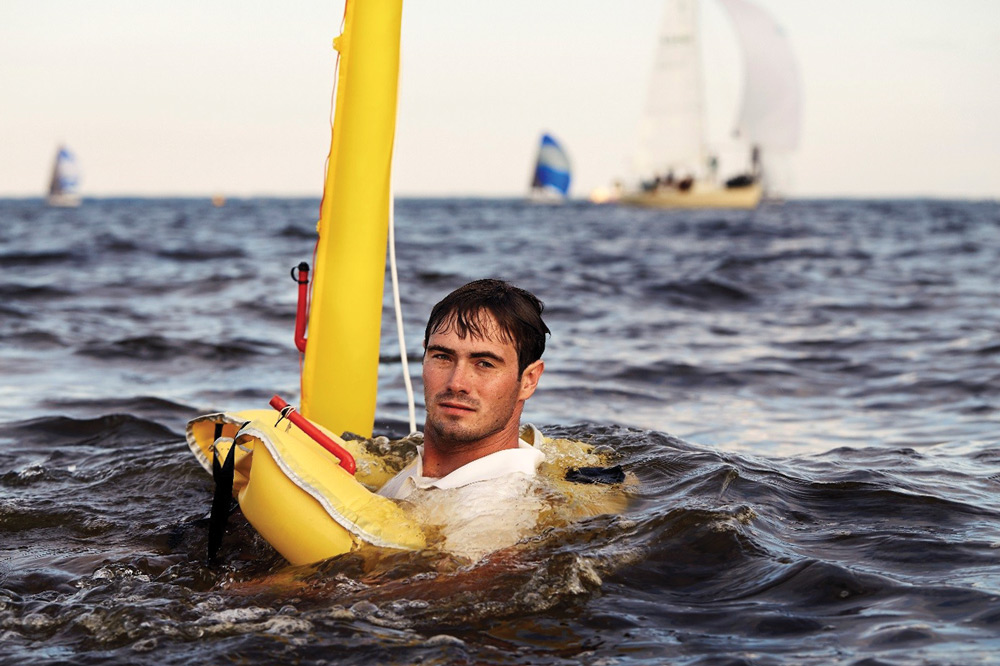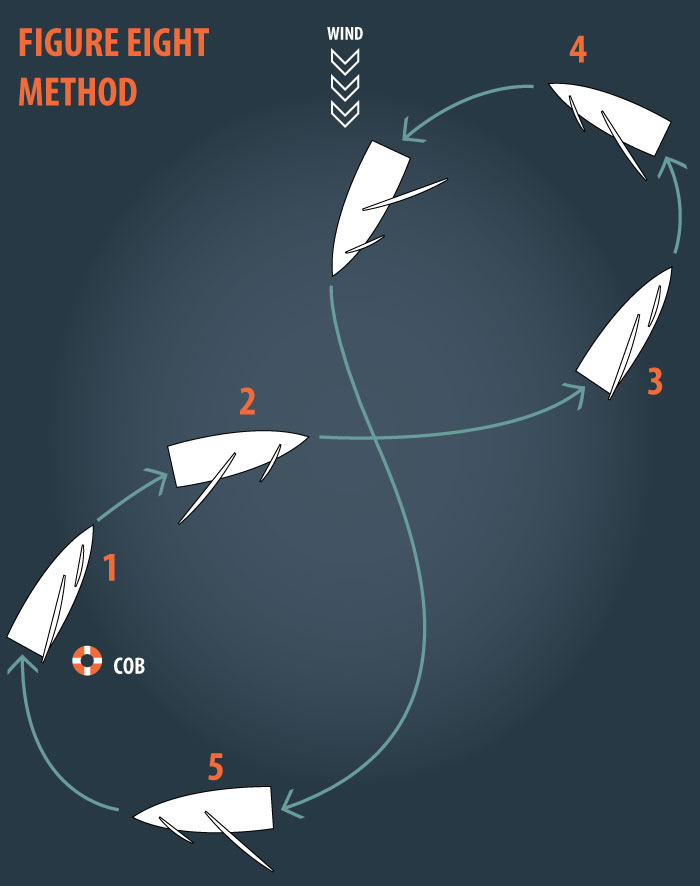6 things every sailor should know how to do
Don’t head out to sea without knowing what to do when emergencies—both small and large—arise
4. How to rescue a man overboard

Most sailors have read and practiced man overboard procedures dozens of times but guidelines for retrieving a person from the water always bear repeating. The following procedure is taught to thousands of new and experiences sailors through American Sailing Association schools every year. It is also outlined in many ASA manuals that may be purchased outside of its courses.
The first response when a person falls overboard is Y, P, T, S, C (yell, point, throw, set, call):
1. Whoever sees a person fall overboard yells, “Man overboard,” and continually points at the person.
2. As soon as possible, someone throws anything handy that floats to the person overboard or launches the man-overboard module if the boat is equipped with one. This not only may help the person in the water stay afloat but also clearly marks the area near where the victim fell overboard.
3. A crewmember who does not already have a job sets the man overboard button on the GPS, then calls for help on VHF channel 16.
The skipper must then decide the best way to turn the boat around, bearing in mind the wind and sea conditions and the capability of the crew. The goal is to sail the boat to a position where you can make your final approach to the person in the water on a close reach. It is better to aim stop to windward and drift downwind to the person rather than end up to leeward of him and drift away.
This can be done using one of several methods:
• Figure Eight: Start at a beam reach, then tack about three boatlengths from the man overboard. Turn the boat through 270 degrees, cross your track and head up to sail toward the man overboard on a close reach.

• Broad Reach-Close Reach: If you were running or broad reaching when the person went overboard, this is a good option. Continue sailing for a few boatlengths on a broad reach, head up, trimming the sails accordingly, then tack. After the tack the boat should be headed almost directly toward the man overboard.
• Quick Stop: In this maneuver, the idea is to stop the boat as close to the man overboard as possible. When sailing close-hauled, immediately turn head to wind as soon as “Man overboard” is called. If you turn past head to wind but do not release the jib sheet, the boat will heave-to and remain almost stationary. When you’re ready, ease the jib sheet and bear away, then jibe around to sail back toward the man overboard on a close reach.
• Recovery under power: An engine can help in recovering a person overboard, but it’s important to make sure that no lines are in the water before starting the engine to avoid fouling the prop and put the engine in neutral as you approach the man overboard. The goal is to position the boat the same way as when you are solely under sail, approaching on a close reach. Stop the boat well before reaching the man overboard and use short bursts in forward gear to make your way closer.
Have a line ready to throw to the man overboard as soon as you are close enough, then use a swim ladder, Lifesling, hoist or just muscle to get him back onboard. You may also want to use a dinghy or bo’sun’s chair if that works.
As with most safety procedures, practice is important. A few trial runs with a life jacket, fender or float will allow you and the crew to practice the different methods so the first time you’re doing it won’t be when it really counts.
Procedures excerpted from ASA sailing manuals.

Comments